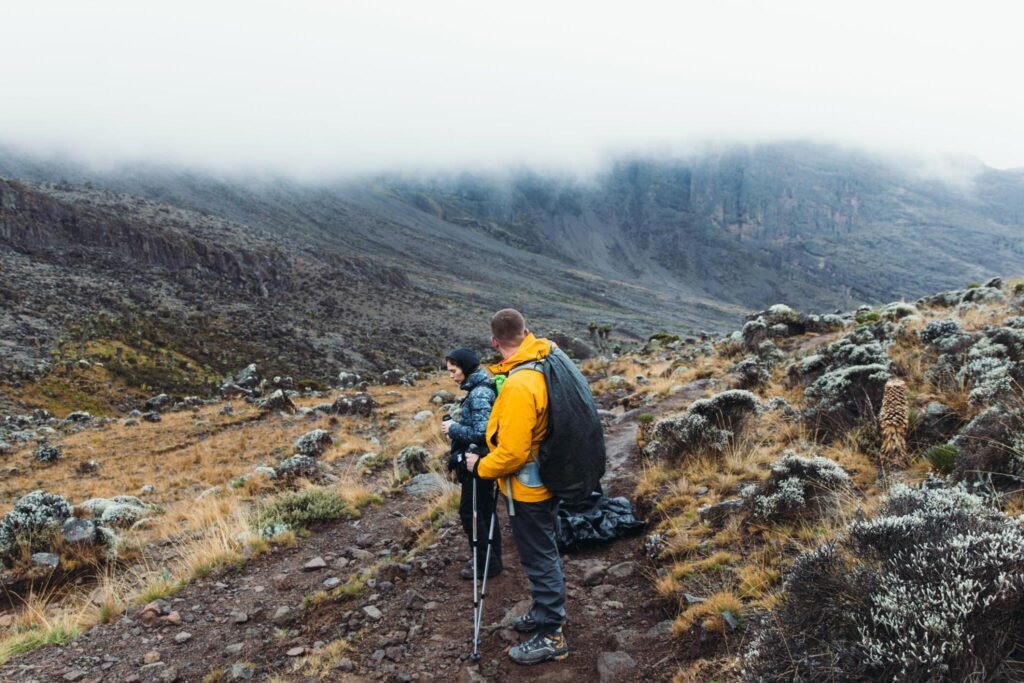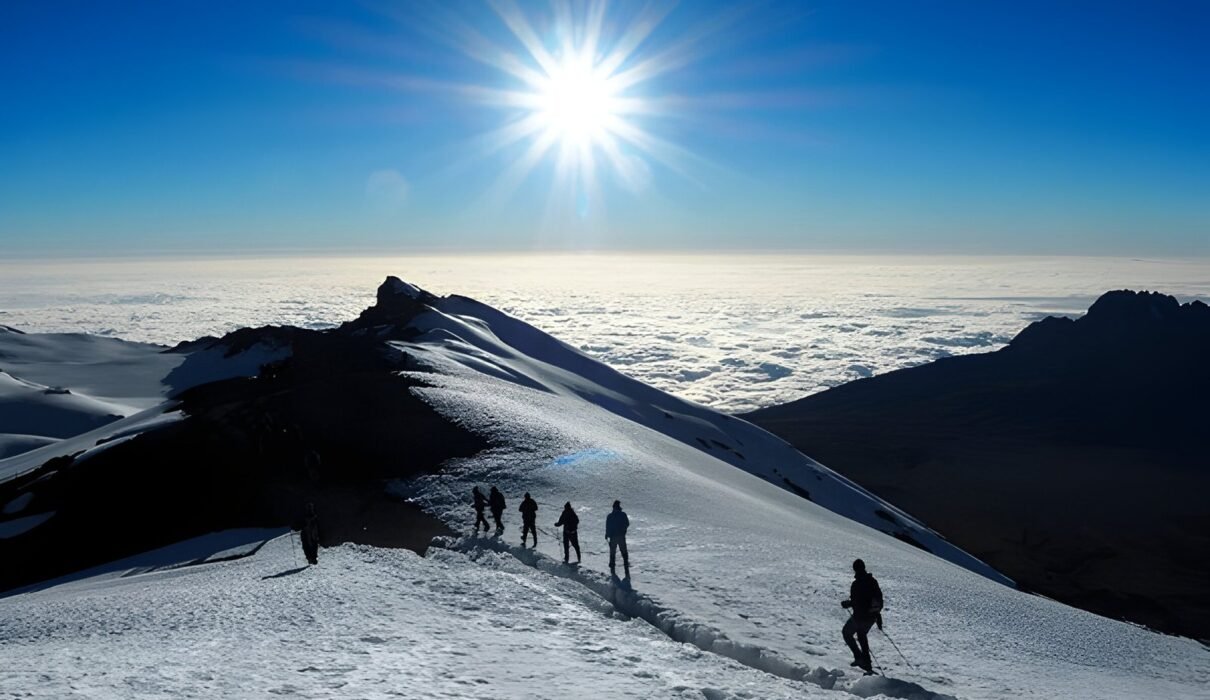Climbing Mount Kilimanjaro is an incredible achievement, but reaching Uhuru Peak at 5,895 meters (19,341 feet) is no easy task. Whether you’re a seasoned hiker or a first-time climber, preparation is crucial to ensure you make it to the top safely and successfully. Here are 10 essential things you must do to reach the summit of Africa’s highest mountain.

1. Choose the Right Kilimanjaro Route for Success
The first step to a successful climb is choosing the right route. Kilimanjaro offers several routes, each with its challenges and advantages.
Top Routes:
- Machame Route: Popular for its scenic beauty and high success rate due to a longer acclimatization period.
- Lemosho Route: Less crowded and offers breathtaking views. This route provides more time to acclimatize, making it ideal for first-timers.
- Marangu Route: Known as the “Coca-Cola” route, it’s one of the easiest routes but has a lower success rate because of shorter acclimatization.
- Rongai Route: Quieter and approaches Kilimanjaro from the north. It’s slightly easier but has fewer acclimatization opportunities.
Learn more about Kilimanjaro routes at Kilimanjaro Climb Specialist
2. Train and Build Your Fitness
Climbing Kilimanjaro doesn’t require technical climbing skills, but it does require physical endurance. Being in top shape will make your trek more enjoyable and improve your chances of success.
Training Tips:
- Cardiovascular Training: Engage in activities like running, swimming, or cycling to improve your stamina.
- Leg Strength: Incorporate squats, lunges, and stair climbing into your routine to build lower body strength.
- Endurance Hikes: Go on practice hikes with a loaded backpack. This helps simulate the actual conditions you’ll face on Kilimanjaro.
Start your training at least 3-6 months before your climb to ensure your body is prepared.
Get fitness tips for Kilimanjaro at Trail Adventure Guide
3. Acclimatize to Avoid Altitude Sickness
Altitude sickness is a major challenge on Kilimanjaro. The higher you go, the thinner the air becomes, and your body needs time to adapt.
How to Acclimatize:
- Choose Longer Routes: Routes like Lemosho or Machame allow more time for your body to adjust to higher altitudes, reducing the risk of altitude sickness.
- Go Slow: Follow the Swahili motto, “pole, pole” (slowly, slowly). A slow pace helps prevent exhaustion and improves your chances of acclimatizing.
- Stay Hydrated: Drink at least 3-4 liters of water each day to help your body cope with the altitude.
Learn about altitude sickness prevention at Climbing High
4. Pack the Right Gear
Having the right gear is essential for a successful Kilimanjaro climb. You’ll be trekking through several climate zones, from rainforest to freezing alpine deserts.
Must-Have Gear:
- Layered Clothing: Use a base layer, mid-layer, and outer layer to stay warm and dry. Pack moisture-wicking materials for comfort.
- Hiking Boots: Sturdy, broken-in boots with good ankle support are essential for the rugged terrain.
- Sleeping Bag: Bring a four-season sleeping bag rated for sub-zero temperatures, as it gets extremely cold at night.
- Daypack: A daypack with hydration storage for carrying water, snacks, and essentials is necessary for daily use.
Check out the full Kilimanjaro packing list at Eddy Tours Safaris
5. Hire a Reputable Guide and Support Team
Climbing Kilimanjaro requires a licensed guide and porters to carry gear, set up camp, and provide meals. Choosing a reputable tour operator is key to your safety and enjoyment.
What to Look for in a Guide:
- Experience and Certification: Ensure your guide is certified and has extensive experience climbing Kilimanjaro.
- Fair Treatment of Porters: Choose a company that treats their porters well and provides proper wages, gear, and working conditions.
- Great Reviews: Read reviews and testimonials to ensure you are working with a trusted and experienced team.
Book a Kilimanjaro climb with Kilimanjaro Climb Specialist
6. Eat Well and Stay Hydrated
Staying fueled and hydrated is crucial when climbing Kilimanjaro. The long trekking days require a high level of energy, and dehydration can worsen altitude sickness.
Tips for Nutrition and Hydration:
- Carb-Heavy Meals: Your body will need energy for long hikes. Eat plenty of carbohydrates like rice, pasta, and potatoes.
- Snacks for Extra Energy: Bring snacks like energy bars, nuts, and dried fruit to refuel throughout the day.
- Water Intake: Drink at least 3-4 liters of water a day. Consider adding electrolyte tablets to prevent dehydration and muscle cramps.
Find more hydration and nutrition tips for trekking at Mountain Nutrition Guide
7. Take It Slow – Pole, Pole
A fast pace can lead to exhaustion or altitude sickness. The key to a successful Kilimanjaro climb is going slow.
Why Slow and Steady Wins:
- Conserve Energy: Going slowly allows your body to save energy for the longer days and summit push.
- Better Acclimatization: Moving slowly helps your body adapt to the altitude, reducing the risk of altitude sickness.
- Enjoy the Scenery: Slowing down also gives you time to appreciate the stunning landscapes of Kilimanjaro.
Learn how pacing affects your success at Trekking Success
8. Get Travel Insurance
Climbing Kilimanjaro comes with risks, so it’s essential to have comprehensive travel insurance that covers high-altitude trekking and emergency evacuations.
What to Look for in Travel Insurance:
- Altitude Coverage: Ensure your policy covers trekking up to 6,000 meters, as Kilimanjaro’s summit stands at 5,895 meters.
- Emergency Evacuations: Coverage for helicopter evacuations is critical in case of altitude sickness or injury.
- Trip Cancellation: Protect your trip in case of unforeseen cancellations due to illness or weather conditions.
Find travel insurance for Kilimanjaro climbs at World Nomads
9. Mentally Prepare for the Challenge
Climbing Kilimanjaro is not just physically demanding but also mentally challenging. Preparing your mind for the journey is just as important as physical training.
Mental Preparation Tips:
- Set Realistic Expectations: Understand that the trek will be difficult, but success is achievable with determination and mental strength.
- Stay Positive: Stay focused on the goal and keep a positive mindset, especially during tough sections of the climb.
- Take It Day by Day: Break the climb into small sections and focus on one day at a time rather than thinking about the entire journey.
Learn mental preparation strategies at Mindset for Adventure
10. Respect the Mountain and Environment
Mount Kilimanjaro is a UNESCO World Heritage Site, and it’s essential to leave no trace and respect the environment while trekking.
Environmental Tips:
- Carry Out All Trash: Leave no litter behind. Pack out all of your waste, including plastic.
- Stay on the Trails: Stick to marked paths to avoid damaging the fragile ecosystems on the mountain.
- Support Sustainable Operators: Choose companies that prioritize environmental conservation and responsible tourism practices.
Support sustainable Kilimanjaro climbs at Ethical Trekking
FAQs About Climbing Kilimanjaro
1. Do I need technical climbing skills for Kilimanjaro?
No, Kilimanjaro is a non-technical trek, but it requires good physical fitness and preparation.
2. How long does it take to climb Kilimanjaro?
The trek typically takes 5-9 days, depending on the route you choose.
3. Is it safe to climb Kilimanjaro?
Yes, with the right preparation and an experienced guide, climbing Kilimanjaro is safe. However, altitude sickness is a real risk, so acclimatization is essential.
Start planning your Kilimanjaro climb with Kilimanjaro Climb Specialist

